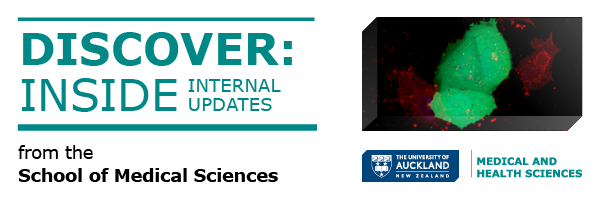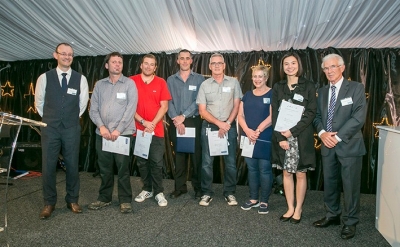Dear Colleagues,
It is hard to believe that the first semester teaching is finished, exams are over and we are preparing for the start of the second semester. On top of doing our “day jobs” it is great to see the school’s successes in the latest grant rounds. This success is an endorsement of the excellence of our research and the hard work of our researchers, especially in a very competitive research environment.
I also wish to congratulate Ray Gilbert, Mary Spellman and Vicky Tsang who as members of the HazTRAC Subject Matter Experts team were recently awarded the inaugural Vice Chancellor’s Excellence Award for Health, Safety and Wellbeing.
The goal of the HazTRAC project was to identify and implement across the whole University a single inventory management system for all chemical and biological (including hazardous and restricted) materials, and lab consumables. The result of the project is the impending rollout of SciQuest ERM - an inventory management and procurement tool that will securely track and manage the full life cycle of material from point of purchase, transport, storage, and use through to the disposal of hazardous and restricted materials.
The HazTRAC project represents an infrastructural investment by the University to meet its strategic objective of making the institution ‘A safe and healthy environment’. To make sure we all contribute to this objective, the University is trying to foster an organisational culture that is characterised by attitudes to health and safety which are proactive, responsible and based on mutual respect and regard.
Hence our next school forum will provide an opportunity for all staff and graduate students to hear updates and progress on University initiatives to continually create a safe place to work and study. Lee Dewhurst, Associate Director for Health, Safety and Wellbeing will be attending and will provide insight into how the University plans to work with you to provide quality advice, support and resources to manage the risk associated with everything we do.
I encourage you to attend the forum, which will be followed by a social mixer to mark the end of semester and to celebrate our successes. I look forward to seeing as many of you as possible on the Wednesday, 13 July.
Regards,
Professor Paul Donaldson
Head of School, School of Medical Sciences
Faculty of Medical and Health Sciences














